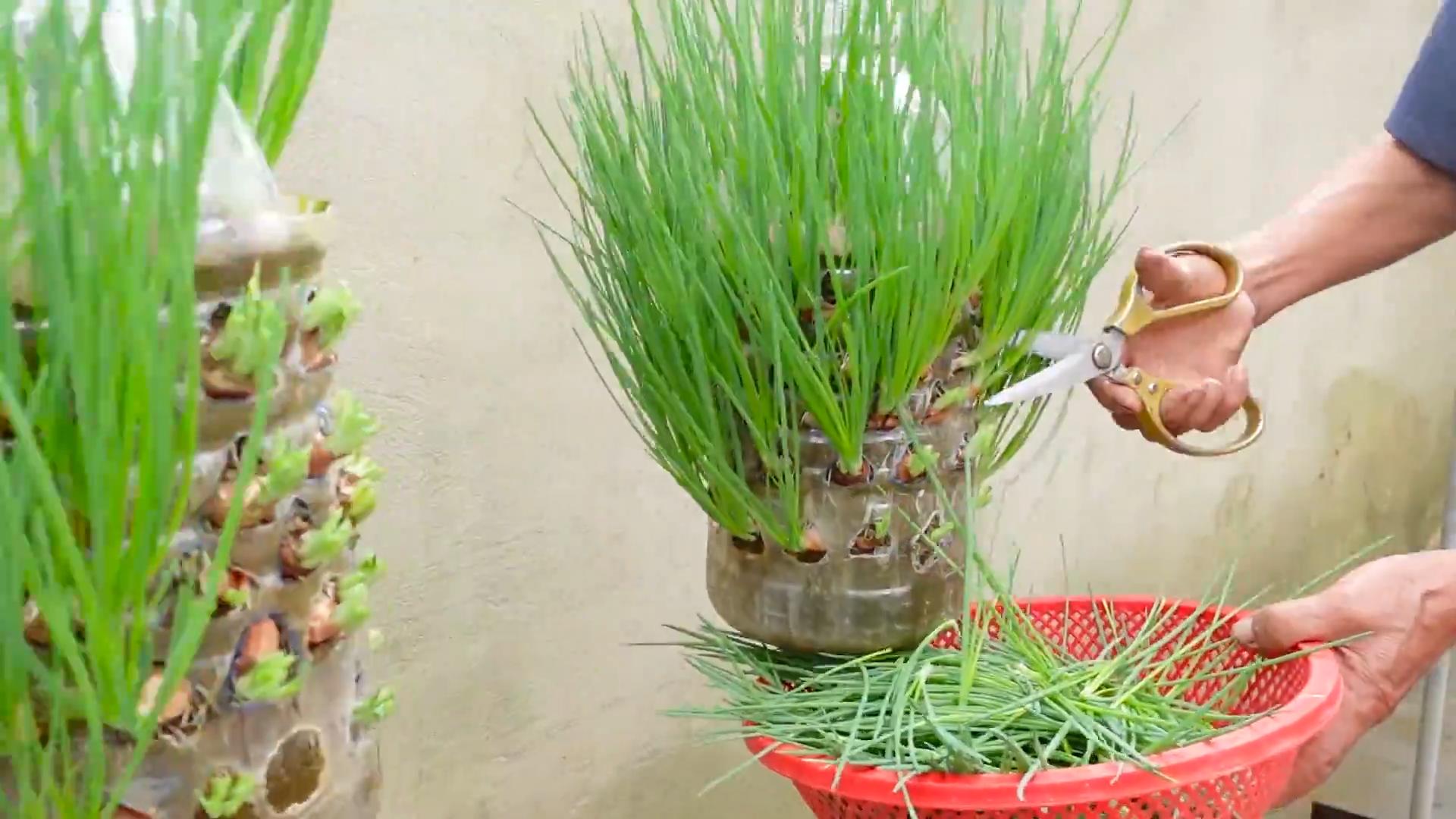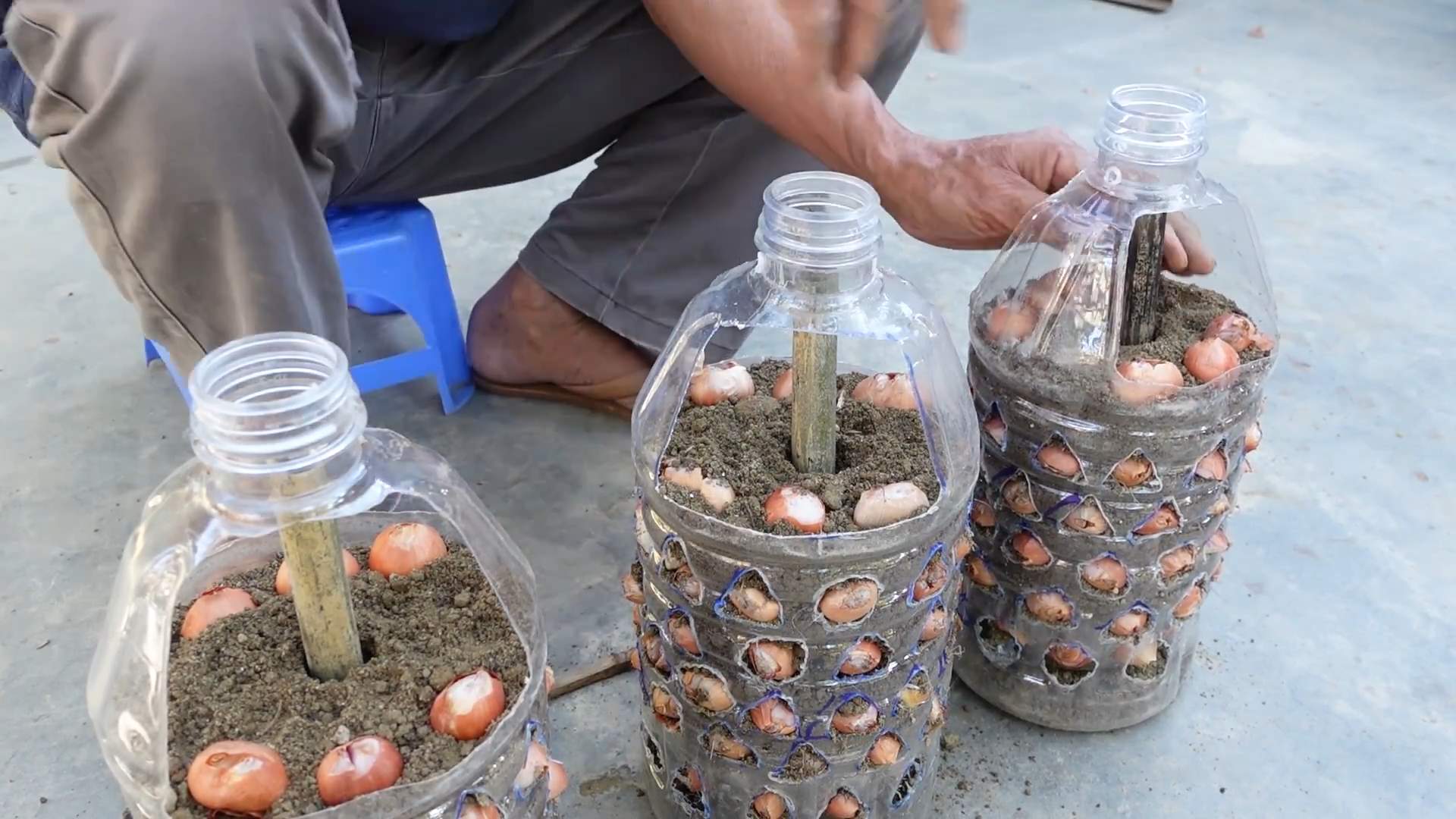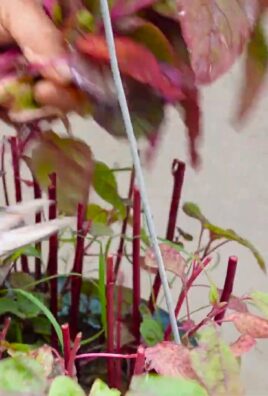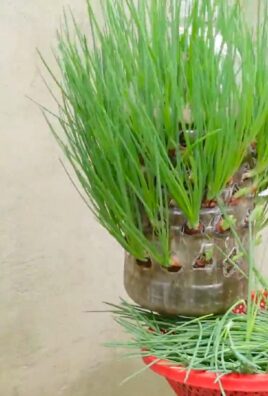Regrow Onions From Scraps: Imagine never having to buy onions again! Okay, maybe not *never*, but significantly reducing your grocery bill and enjoying a constant supply of fresh onions right from your kitchen? That’s the magic we’re unlocking today with this super simple DIY guide. For centuries, resourceful gardeners have been finding ways to maximize their yields and minimize waste, and regrowing vegetables from scraps is a time-honored tradition.
Think about it – our grandmothers probably did this! This isn’t just a modern trend; it’s a return to sustainable practices that connect us to the earth and our food. But why should *you* bother with this seemingly small act? Well, beyond the obvious cost savings, regrowing onions from scraps is incredibly rewarding. It’s a fantastic way to introduce children to gardening, reduce your environmental footprint, and always have a flavorful ingredient on hand for your favorite recipes. Plus, who doesn’t love a little kitchen magic?
This DIY trick is a game-changer for anyone who cooks regularly. How many times have you needed just a sliver of onion and ended up throwing the rest away? With this method, you can utilize those scraps and turn them into new, vibrant onions. I’m going to show you exactly how to regrow onions from scraps, step-by-step, with minimal effort and maximum results. Get ready to transform your kitchen scraps into a thriving little onion patch!

Regrowing Onions From Scraps: A Gardener’s Delight!
Hey there, fellow green thumbs! Ever feel guilty tossing those onion ends after chopping them up for dinner? Well, fret no more! I’m going to show you how to easily regrow onions from scraps, turning kitchen waste into a continuous supply of fresh onions. It’s a super rewarding and surprisingly simple DIY project. Let’s get started!
What You’ll Need
Before we dive in, let’s gather our supplies. This is a pretty low-key project, so you probably have most of this stuff already:
* **Onion Scraps:** The bottom 1-2 inches of an onion, with the roots still attached. Don’t worry if they look a little sad; they’re tougher than you think!
* **A Glass or Jar:** Something to hold the onion scrap and water. A small mason jar or even a recycled yogurt container works perfectly.
* **Water:** Tap water is fine.
* **Potting Soil:** For transplanting the onion later. Any good quality potting mix will do.
* **A Pot or Garden Bed:** Somewhere to plant your regrown onion.
* **Optional: Rooting Hormone:** This isn’t essential, but it can give your onion a little boost.
* **Optional: Fertilizer:** A balanced liquid fertilizer can help your onion thrive once it’s planted.
Step-by-Step Instructions: Water Propagation
This is the first phase, where we encourage root growth in water. It’s like giving your onion a little spa treatment before the real work begins!
1. **Prepare the Onion Scrap:** Gently peel away any loose or slimy outer layers from the onion scrap. Be careful not to damage the roots. I usually just remove the very outermost layer if it’s looking a bit rough.
2. **Place the Onion in Water:** Put the onion scrap, root-side down, in your glass or jar. Add enough water so that the bottom inch or so of the onion is submerged, but the top part of the scrap remains dry. You don’t want the whole thing sitting in water, or it might rot.
3. **Find a Sunny Spot:** Place the jar in a bright, sunny location, like a windowsill. Onions love sunlight!
4. **Change the Water Regularly:** Change the water every 1-2 days to keep it fresh and prevent bacteria growth. This is super important! Stagnant water can lead to rot, and we don’t want that.
5. **Observe and Wait:** Within a few days, you should start to see new green shoots emerging from the top of the onion scrap and the roots growing longer. It’s so exciting to watch!
6. **Patience is Key:** Let the roots grow for about a week or two, until they are a few inches long. The longer the roots, the better the chances of successful transplanting.
Step-by-Step Instructions: Planting in Soil
Now that our onion has established some roots, it’s time to move it to its permanent home in the soil.
1. **Prepare Your Pot or Garden Bed:** Choose a pot that’s at least 6 inches in diameter, or find a sunny spot in your garden. Make sure the soil is well-draining. Onions don’t like to sit in soggy soil.
2. **Dig a Hole:** Dig a hole in the soil that’s deep enough to accommodate the onion scrap and its roots.
3. **Optional: Dip in Rooting Hormone:** If you’re using rooting hormone, dip the roots of the onion scrap in the powder or liquid according to the package instructions. This can help encourage further root growth.
4. **Plant the Onion:** Gently place the onion scrap in the hole, making sure the roots are spread out. Cover the onion with soil, leaving the top green shoots exposed.
5. **Water Thoroughly:** Water the soil well after planting.
6. **Monitor and Water Regularly:** Keep the soil consistently moist, but not waterlogged. Water when the top inch of soil feels dry to the touch.
7. **Fertilize (Optional):** After a few weeks, you can start fertilizing your onion with a balanced liquid fertilizer, following the package instructions. This will help it grow bigger and stronger.
What to Expect After Planting
After planting, your onion will continue to grow. You’ll see the green shoots getting taller and thicker.
* **Green Onions:** You can harvest the green shoots as green onions whenever you need them. Just snip them off near the base of the plant. The onion will continue to produce more shoots.
* **Bulb Formation:** Depending on the variety of onion and the growing conditions, you may or may not get a full-sized onion bulb. Some onions are better suited for regrowing than others. Even if you don’t get a huge bulb, you’ll still get plenty of delicious green onions!
* **Flowering:** Sometimes, onions will flower. If this happens, the bulb will stop growing, and the plant will focus on producing seeds. You can still eat the green shoots, but the bulb won’t get any bigger.
Troubleshooting
Even with the best intentions, things don’t always go according to plan. Here are a few common problems you might encounter and how to fix them:
* **Rotting:** If your onion scrap starts to rot, it’s usually because it’s sitting in too much water. Make sure only the bottom inch or so of the onion is submerged, and change the water regularly. If the rot is severe, you might have to start with a fresh onion scrap.
* **Slow Growth:** If your onion isn’t growing very fast, it could be due to a lack of sunlight or nutrients. Make sure it’s in a sunny location and consider fertilizing it.
* **Yellowing Leaves:** Yellowing leaves can be a sign of overwatering or underwatering. Check the soil moisture and adjust your watering accordingly. It could also be a sign of nutrient deficiency, so try fertilizing.
* **Pests:** Onions can be susceptible to pests like aphids and onion maggots. Inspect your plants regularly and take action if you see any signs of infestation. Insecticidal soap or neem oil can be effective treatments.
Tips for Success
Here are a few extra tips to help you get the most out of your onion-regrowing adventure:
* Choose the Right Onions: Some onions are better suited for regrowing than others. Green onions, shallots, and smaller onions tend to be easier to regrow than large bulb onions.
* Start with Healthy Scraps: Choose onion scraps that are firm and have healthy-looking roots. Avoid scraps that are soft, mushy, or have signs of rot.
* Provide Plenty of Sunlight: Onions need at least 6 hours of sunlight per day to thrive.
* Don’t Overwater: Overwatering can lead to rot. Let the soil dry out slightly between waterings.
* Be Patient: It takes time for onions to grow. Don’t get discouraged if you don’t see results immediately.
* Experiment: Try regrowing different types of onions and see which ones work best for you.
* Successive Planting: To ensure a continuous supply of green onions, start new onion scraps every few weeks.
Beyond the Basics: Growing Different Types of Onions
While the method described above works well for green onions and smaller varieties, you can also try regrowing other types of onions. Here’s a quick rundown:
* **Shallots:** Shallots are very easy to regrow from scraps. They tend to multiply, producing multiple new shallots from a single scrap.
* **Garlic:** While technically not an onion, garlic can be regrown in a similar way. Plant a single clove with the pointed end facing up.
* **Leeks:** Leeks can also be regrown from the white base. Place the base in water until roots develop, then plant in soil.
Why Regrow Onions?
Besides being a fun and rewarding project, regrowing onions from scraps has several benefits:
* Reduces Food Waste: You’re turning kitchen scraps into something useful, which helps reduce waste and saves you money.
* Saves Money: You’ll have a continuous supply of green onions, which means you won’t have to buy them as often.
* Environmentally Friendly: You’re reducing your carbon footprint by growing your own food.
* Educational: It’s a great way to learn about plant growth and gardening.
* Fresh, Flavorful Onions: Homegrown onions often have a better flavor than store-bought ones.
So there you have it! Regrowing onions from scraps is a simple, fun, and rewarding project that anyone can do. Give it a try, and you’ll be amazed at how easy it is to turn kitchen waste into a delicious and sustainable source of fresh onions. Happy gardening!

Conclusion
So, there you have it! Transforming those humble onion scraps into a thriving supply of fresh, flavorful onions is not just a clever gardening hack; it’s a sustainable practice that benefits your wallet, your palate, and the planet. We’ve shown you how easy it is to regrow onions from scraps, turning what would normally be kitchen waste into a valuable resource.
Think about it: no more last-minute trips to the grocery store when you’re missing that crucial onion for your favorite recipe. Imagine the satisfaction of harvesting your own homegrown onions, knowing you nurtured them from mere scraps. And consider the environmental impact – reducing food waste and minimizing your carbon footprint, one onion at a time.
But the beauty of this DIY trick lies not only in its practicality but also in its adaptability. While we’ve focused on green onions and bulb onions, you can experiment with other members of the allium family, such as shallots or leeks. The principles remain the same: provide the scraps with water, sunlight, and a little patience, and watch them flourish.
For those seeking even more control over their onion-growing journey, consider transplanting your regrown onions into larger pots or directly into your garden bed. This will allow them to develop larger bulbs and potentially produce seeds for future generations of onions. You can also experiment with different soil types and fertilizers to optimize growth and flavor.
Don’t be afraid to get creative! Try growing your onion scraps in different containers, from repurposed jars to decorative planters. Add companion plants like carrots or chamomile to your onion patch to deter pests and enhance growth. The possibilities are endless!
We understand that gardening can sometimes feel daunting, but this is a project that anyone can tackle, regardless of their experience level. It’s a simple, rewarding, and educational activity that can bring joy and fresh produce to your home.
We wholeheartedly encourage you to give this DIY trick a try. Start small, with just a few onion scraps, and see the magic unfold before your eyes. And most importantly, we want to hear about your experiences! Share your photos, tips, and stories with us in the comments below. Let’s create a community of resourceful gardeners who are passionate about regrowing onions from scraps and making the most of what we have. Happy growing!
Frequently Asked Questions (FAQ)
What part of the onion do I need to regrow it?
The most important part is the root end of the onion. This is the portion with the roots still attached, even if they are dried out. You’ll want to cut off the onion about an inch or two above the root base. For green onions, you can use the white part with the roots. For bulb onions, you’ll need the bottom portion that would normally be discarded.
How long does it take to regrow an onion from a scrap?
The time it takes to see significant regrowth varies depending on factors like the type of onion, the amount of sunlight it receives, and the temperature. Generally, you should start to see new green shoots emerging within a week. Within a few weeks, you’ll have a noticeable amount of new growth. For bulb onions, it can take several months to develop a fully formed bulb if transplanted into soil. Green onions will regrow much faster, providing a continuous supply of fresh greens.
Can I regrow any type of onion?
Yes, you can regrow most types of onions from scraps, including green onions, yellow onions, white onions, red onions, and even shallots. The process is generally the same for all of them. Green onions are the easiest and fastest to regrow, making them a great starting point for beginners. Bulb onions will take longer and require more space to develop a full bulb.
How much sunlight do regrowing onions need?
Onions need plenty of sunlight to thrive. Aim for at least 6-8 hours of direct sunlight per day. If you’re growing them indoors, place them near a sunny window or use a grow light to supplement natural light. Insufficient sunlight can result in weak, leggy growth.
What kind of water should I use?
Tap water is generally fine for regrowing onions. However, if your tap water is heavily chlorinated, you may want to let it sit out for 24 hours before using it to allow the chlorine to dissipate. Alternatively, you can use filtered water or rainwater. Avoid using softened water, as it can contain high levels of sodium, which can be harmful to plants.
Do I need to fertilize the regrowing onions?
While not strictly necessary, fertilizing your regrowing onions can help them grow faster and produce more flavorful greens. You can use a diluted liquid fertilizer, such as a balanced 10-10-10 fertilizer, every few weeks. Alternatively, you can add compost or worm castings to the soil if you transplant them into pots or a garden bed. Be careful not to over-fertilize, as this can burn the roots.
How often should I change the water?
Change the water every 1-2 days to prevent it from becoming cloudy or stagnant. Stagnant water can harbor bacteria and fungi that can harm the onion scraps. When changing the water, gently rinse the roots to remove any debris.
Can I transplant the regrown onions into soil?
Yes, transplanting the regrown onions into soil is highly recommended, especially if you want to grow larger bulbs. Once the roots have developed and the green shoots have grown a few inches, you can transplant them into pots or directly into your garden bed. Choose a well-draining soil and a sunny location.
What kind of soil should I use for transplanting?
Use a well-draining soil that is rich in organic matter. A good potting mix or a mixture of garden soil, compost, and perlite will work well. Avoid using heavy clay soil, as it can retain too much moisture and lead to root rot.
How do I harvest the regrown onions?
For green onions, you can harvest the green shoots as needed by snipping them off with scissors. The onion will continue to produce new shoots as long as the roots are healthy. For bulb onions, allow the bulb to mature fully before harvesting. The leaves will start to turn yellow and fall over when the bulb is ready to be harvested.
What if my onion scraps start to rot?
If your onion scraps start to rot, it’s usually a sign of overwatering or poor drainage. Remove the rotting scraps immediately to prevent the rot from spreading to other scraps. Make sure to change the water more frequently and provide better drainage if you’re growing them in soil.
Can I regrow onions indoors year-round?
Yes, you can regrow onions indoors year-round as long as you provide them with sufficient light and water. A sunny window or a grow light will ensure that they get enough light, even during the winter months.
Are there any pests or diseases that affect regrowing onions?
Regrowing onions can be susceptible to pests like aphids and onion maggots, as well as diseases like onion rot. Regularly inspect your onions for signs of pests or diseases and take appropriate action if necessary. You can use organic pest control methods like insecticidal soap or neem oil to control pests. Ensure good air circulation to prevent fungal diseases.
Can I eat the regrown onion bulb?
Yes, if you successfully transplant your regrown onion into soil and allow it to develop a bulb, you can eat the bulb just like any other onion. The flavor may be slightly milder than store-bought onions, but it will still be delicious.
Is it worth it to regrow onions from scraps?
Absolutely! Regrowing onions from scraps is a sustainable, cost-effective, and rewarding way to reduce food waste and enjoy fresh, homegrown onions. It’s a simple project that anyone can do, and it’s a great way to connect with nature and learn about the life cycle of plants. Plus, it’s incredibly satisfying to see something grow from what would otherwise be thrown away. So, give it a try and see for yourself!




Leave a Comment